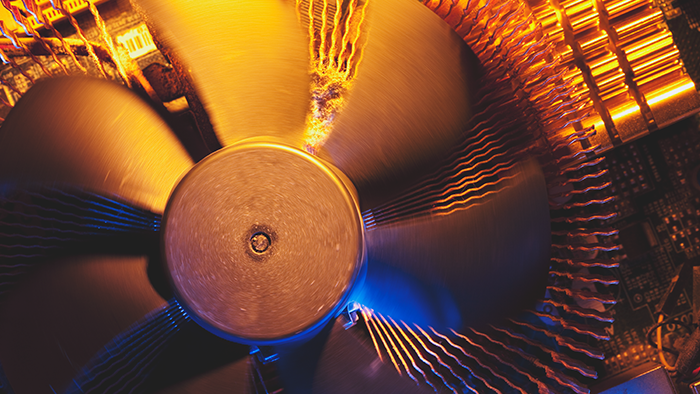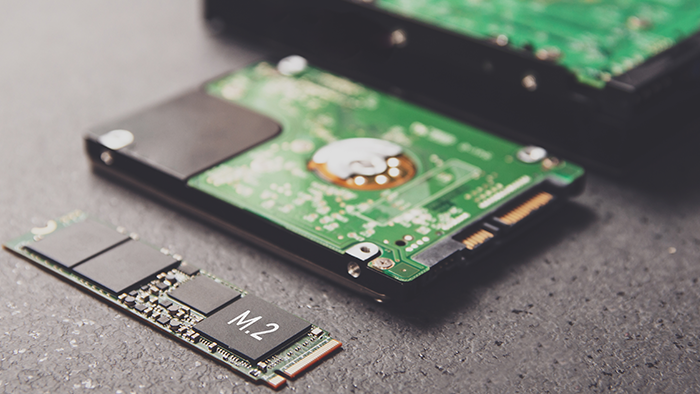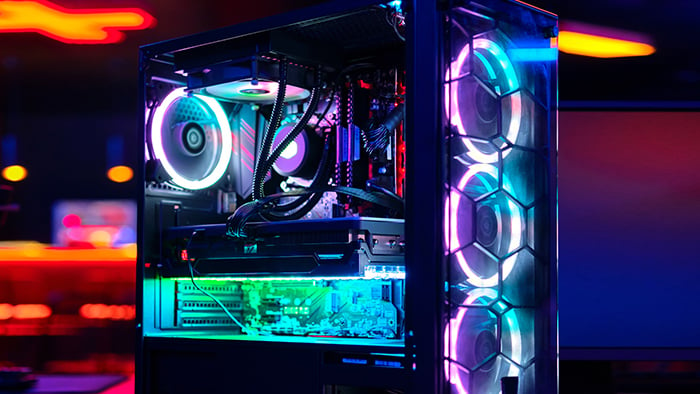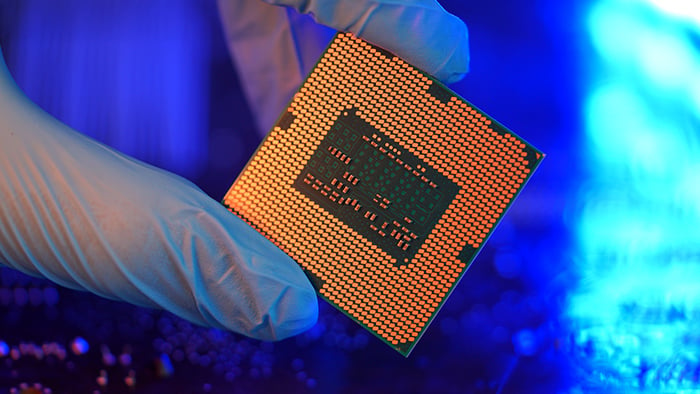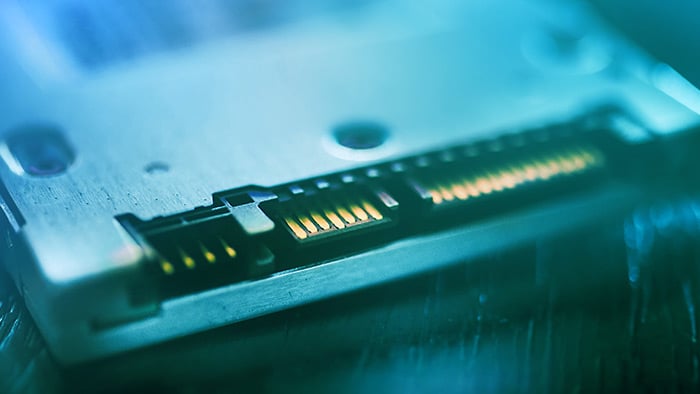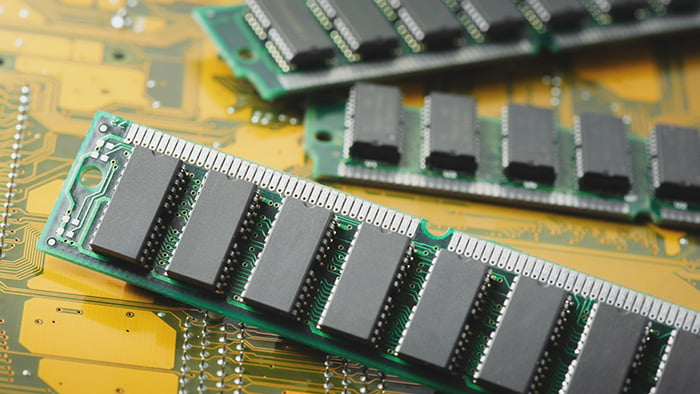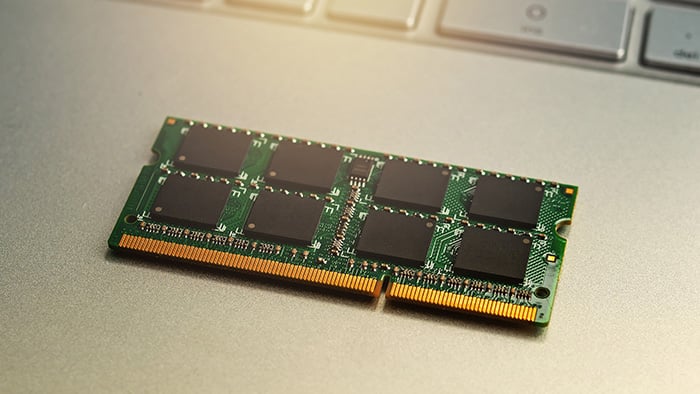Check your computer’s CPU temperature
The easiest way to check your CPU (central processing unit) temp is to install a free tool to monitor CPU temperatures for spikes and anomalies. You can also check your CPU Monitor using Windows’ built-in BIOS/UEFI tool.
Using BIOS/UEFI
PCs have a CPU temperature check built into the BIOS/UEFI. BIOS (Basic Input/Output System) and UEFI (Unified Extensible Firmware Interface) are types of firmware that initialize your computer's hardware and start the operating system.
To access BIOS/UEFI, turn on your PC and press the relevant key during the startup process — usually F12, ESC, F2, or DEL. Once BIOS/UEFI is open, you’ll find the CPU temperatures on the main screen.
This thermometer feature is part of the core software of your motherboard. Unfortunately, it only allows you to check the current temperatures of your CPU. It doesn’t allow for dynamic temperature monitoring over time.
Without BIOS/UEFI
BIOS and UEFI aren’t ideal for checking temperatures, since they can’t monitor your PC while it’s in use. Because CPUs rarely overheat during startup, you’ll likely need third-party software to track temperatures throughout your session.
There are several popular CPU monitoring tools available, including:
Here’s how to check your CPU temperatures using Core Temp:
-
Download, install, and launch Core Temp.
-
Review the Temperature Readings section:
-
Max and Min show the highest and lowest recorded processor temperatures for each core.
-
Load shows the current CPU load. A high load will typically correlate with a high temperature.

Hot temperatures can age hardware rapidly, so using a PC temp monitor to help you manage overheating can help you keep your computer working well for longer.
What is the average CPU temperature?
An average CPU temperature for a normal workload is anywhere between 40–65°C (104–149°F), depending on your processor. While running more intensive apps or games, the normal CPU temp range can increase to between 70–80°C (158–176°F).
The rule of thumb is that a bad CPU temp is 80-85°C (176–185°F) or above. There could be a serious problem if you’re reaching this temperature, especially without gaming or running any resource-intensive programs.
On a desktop gaming PC with plenty of cooling and a high-end CPU, it’s normal to see CPU temperatures around 50°C (122°F) without running anything too demanding. On an Ultrabook — a very thin, lightweight laptop with minimal internal space — it’s normal for core temps to hover around 75°C (167°F) during an average workday.
 CPU temperatures can range depending on the type of CPU you have and the tasks you’re running. Aim to keep temps between 104-149°F.
CPU temperatures can range depending on the type of CPU you have and the tasks you’re running. Aim to keep temps between 104-149°F.
What is a normal CPU temperature for gaming?
A normal CPU temp while gaming is between 65-85°C (149–185°F). While average temperatures above 85°C (185°F) are fine for a few minutes of gameplay or other intense CPU use, it isn’t a good idea for an extended period — even if your system is optimized for gaming.
How do I know if my CPU is overheating?
If your CPU is overheating, you may notice performance issues such as lag or freezing, or your system may shut down unexpectedly. You may also hear your computer's fans working harder than usual or feel your computer is hot to the touch.
How to monitor your CPU temperature constantly
You can consistently monitor your CPU temperature with the help of tools like Core Temp. Monitoring your CPU temperature is important when you work with demanding applications, such as video editing software, or when you use your computer in sunlight — both of these can contribute to an overheating CPU.
Core Temp offers an easy way to monitor your CPU temperature across multiple cores. You can even set up the readings to appear in your taskbar at all times.
Here’s how to check your computer temperatures and keep them monitored at all times:
-
Download, install, and launch Core Temp.
-
Click the arrow in the notification area of your taskbar. The numbers displayed represent the temperatures of your CPU cores, typically showing two to four readings.

-
Click one of the numbers and drag it to your taskbar. Your real-time CPU temperatures will now be visible at a glance.

-
To display only the highest temperature of any of the cores, open the app and go to Options > Settings > Notification Area, select Highest temperature per processor and click OK.

How do I monitor my AMD CPU temp?
You can monitor your AMD CPU temps with AMD Ryzen™ Master, which provides real-time monitoring of temperature, voltages, and more.
Regardless of whether you have AMD or Intel hardware, using specialized cleanup software like Avast Cleanup helps optimize your system for maximum processor performance.
Monitoring your CPU temperature while gaming
If you're a gamer, you can monitor your CPU temperature while in full screen with MSI Afterburner. This displays a discreet reading over your gameplay, so there’s no need to disrupt your gaming experience. This feature is powered by RivaTuner Statistics Server (RTSS), which comes bundled with MSI Afterburner.
Here’s how to monitor your CPU temperatures while gaming:
-
Download, install, and launch MSI Afterburner.
-
Click the Settings icon, select the Monitoring tab, click CPU temperature, and select Show in On-Screen Display.

-
Launch your game, and your CPU temps will show automatically.

You can also monitor other stats while you’re gaming. Open the Monitoring tab in MSI Afterburner and select GPU temps, RAM usage, or other key stats. These numbers will also sit near the CPU thermometer in the top-left corner of your screen while gaming.
Why is my CPU temp so high?
Your CPU executes millions of operations every second, generating significant heat in the process. Temperatures can rise quickly during resource-heavy tasks, when overclocking, if cooling fans are failing, or when dust and poor ventilation restrict airflow.
If these temperatures climb too high unnoticed, you may encounter system instability, crashes, performance slowdowns, and even long-term hardware damage.
Here are the most common causes of high CPU temperatures:
-
Intensive simultaneous operations
Running multiple high-intensity tasks at once can cause your CPU temperature to spike and slow down your system. When it reaches critical levels, the CPU may throttle its performance to prevent overheating and protect the hardware.
-
Overclocking
If you’re overclocking your CPU, its temperature will definitely increase. Pushing your GPU beyond its limits can indirectly affect CPU performance by increasing power draw and heat, potentially causing instability or throttling.
-
A faulty PC fan
It’s normal for your laptop fan to run even when the system is idle. But if it isn’t working properly, cooling efficiency drops, and you may notice unusually loud and persistent fan noise. Open Task Manager to identify and close unnecessary processes, and if the noise continues, consider replacing the fan.
-
Dust buildup
Older computers gather dust inside the computer chassis, which can slow down and clog your fans, impacting your computer’s cooling functions.
-
Limited ventilation space
If your computer is sitting on a surface that inhibits air circulation, or if you have a slimline laptop, there may not be enough space for effective ventilation. In addition to monitoring processor temperatures, keep your computer on a hard, flat surface that doesn’t trap air — or raise it using a laptop stand or cooler.
-
System freezes and crashes
If your PC crashes or shuts down randomly, it might not be a hardware or software defect. A system that runs too hot may turn off automatically to prevent long-term physical damage from the heat. The max temperature at which a PC is allowed to run can be set in the BIOS/UEFI.
What is the CPU over temperature error?
A CPU over-temperature error occurs when the processor reaches a critical heat level, sometimes forcing the system to shut down. Common causes include malware that drives excessive CPU usage, poor ventilation or exposure to heat sources, a failing cooling system, or excessive overclocking.
Removing viruses from your PC and taking other steps to keep your computer cool can help prevent the CPU over temperature error.
How to keep CPU temperatures down
You can keep CPU temperatures down by turning off background applications, keeping your PC and cooling fans clean, and ensuring it’s malware-free.
Here are some more tips to cool down your CPU:
-
Clean your PC: Remove the cover, or use compressed air dusters to unclog the inner workings of your PC and the CPU fan. Cleaning your PC inside and out is the first step in fixing your overheating PC.
-
Use a laptop stand: A stand elevates your laptop to improve airflow and help prevent overheating. It also keeps your screen at eye level, reducing neck and back strain during long sessions.
-
Keep your environment cool: Don’t place your laptop or PC in direct sunlight, and keep the ambient temperature as cool as possible. Always turn off your laptop, or set it to idle or sleep mode, before putting it in a bag or case.
-
Replace your cooling fan: If the fans inside your PC aren’t up to the task, replace them with a more powerful air cooler or install a liquid-cooling solution.
-
Refresh your thermal paste: Thermal paste is a substance used to improve the transfer of heat between your CPU and the heat sink. Over time, it can degrade, contributing to overheating issues. If you’ve had your computer for a few years or more, applying new paste can improve heat transfer.
-
Keep it malware-free: Some viruses produce constant 100% CPU usage, drastically increasing the core load and temperature. Run a free antivirus scan to detect and remove malware on your PC. Then, make sure you have an antivirus running on all your devices at all times for ongoing malware protection.
-
Turn off background applications and close programs: Use dedicated PC cleaner software to automatically put resource-draining apps and programs to sleep, reducing the load on your system and lowering CPU temperatures.
If your core temps and speed don’t improve, try a PC optimization tool to identify performance hogs and help keep your PC running smoothly.
Keep your PC running smoothly with Avast Cleanup
A computer that's clogged with unnecessary files is more likely to overheat, experience slowdowns, and even crash. By removing junk files, optimizing background apps, and improving efficiency, Avast Cleanup helps keep your CPU cool and your system running smoothly — whether you’re gaming, working, browsing, or juggling all three. Try Avast Cleanup for free today.










